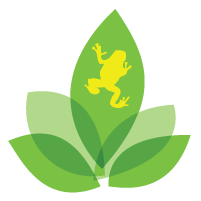Josh's Frogs
Bynoe's Gecko Care Sheet
By Will Gyurgyik

Bynoe's gecko, Heteronotia binoei, is a small, terrestrial gecko that is easy to keep and breed.
COLORATION
Bynoe's geckos are slender. They are reddish-brown colored with thin banding.
HOUSING
A single animal, pairs, or trios can be kept in a 12x12x12 or 10 gallon enclosure. Larger enclosures are needed to hold more individuals. This all-female species can be housed in groups provided the individuals are of similar size. The group should be monitored and individuals who are bullied should be removed as needed. Sand or Desert BioBedding works well as a substrate. Numerous hides should be provided. Slate, cork flats, or even everyday items like overturned flower saucers work well. Low climbing materials like rocks, driftwood, cork bark, manzanita branches, and other rough surfaces can be added. For the safety of the animals, however, they should be supported by the bottom of the enclosure rather than the substrate. Succulents and arid plants can also be added.
TEMPERATURE
Keep Bynoe’s geckos in the mid 70’s. Provide a basking spot of around 85-90 F. An under tank heater or low wattage basking bulb can be used. Temperature should be monitored with a digital thermometer. The basking spot can be checked with an infrared thermometer or temperature gun. Night temperatures should not fall below 65 F. Since this is a nocturnal gecko, UV light is not required.
HUMIDITY
Keep Bynoe’s geckos at 30-40% humidity. Ambient humidity should be monitored with a digital hygrometer. A humid hide is strongly recommended. Lightly mist the habitat 2 to 3 times per week or every other day. This will spike humidity and provide dew on enclosure walls and cage items from which they can drink. However, enough ventilation should be provided to allow the enclosure to dry out after a few hours. A shallow water dish can be provided but is not necessary with regular misting. If using a water dish, it also won't replace the need for regular misting.
SIZE
Bynoe’s gecko hatchlings are around 1-1.5 inches. Adults will reach about 4-5 inches from head to tail. This species has a lean build.
DIET
Bynoe’s geckos have a voracious appetite for bugs. Fortunately, we provide all of the feeder bugs your Bynoe's gecko will need. A staple diet of dubia roaches or crickets is recommended. Other food items, such as small mealworms, black soldier fly larvae, or waxworms, can be occasionally offered. A good rule of thumb for size is to only offer insects whose length does not exceed the space in between the gecko’s eyes. Generally, hatchlings should be fed insects measuring around ⅛-inch. Subadults and adults can be moved up to ¼-inch insects. Feeder insects should be gut loaded and dusted with a vitamin/mineral supplement. A food dish is not necessary but will help contain insects. An escape-proof feeding dish will help keep bugs from hiding.
SEX
Heteronotia binoei are parthenogenic. Thus, there is no need for male fertilization.
BREEDING
A moist hide can be added, though eggs are likely to be laid in the substrate. Females lay pairs of eggs. They can lay up to 4 to 5 clutches per year. Eggs should be carefully removed and incubated.
NATURAL RANGE
Bynoe’s geckos are endemic to Australia and live in varied habitats. Being terrestrial, they can be found in sandy areas, tropical rainforest, and deserts.
HISTORY IN THE HOBBY
Even though captive bred Bynoe's geckos are inexpensive and a great beginner desert gecko, they are not very common. We’re excited to make this gecko more popular and available!
LINKS OF INTEREST:
Supreme Gecko - Heteronotia binoei

